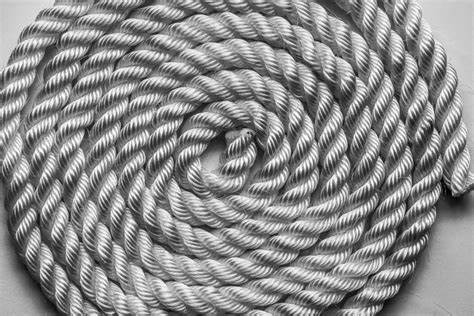An important ingredient for the success of a cruise or a boat race is certainly determined by the efficiency of our means and the maintenance of the equipment and ropes on-board.
Mooring lines, halyards and sheets are, besides essential instruments on a boat, elements that are tied to our sailing safety.
Ropes, like all nautical equipment, are subject to gradual wear and tear that, with time, results in a more or less rapid loss of initial performance.
However, small precautions and constant maintenance allows us prolong the lifespan of our ropes, keeping them efficient and preserving performance as much as possible.
So how do we proceed?
Abrasion, exposure to UV rays and sea salt are the primary antagonists against which we must defend.
Let’s see some possible solutions we can adopt:
1) Inspection of ropes on-board:
A good rule, before or after every cruise or demanding voyage, is visually checking the running rigging to identify and avoid possible friction and abrasion points with the rest of the equipment.
Inspection of the external appearance of a rope, while not being a method that allows you to fully determine its condition, allows you to identify any points of wear and tear, therefore enabling you to take the necessary measures in time.

2) Avoiding abrasion points
To combat abrasion, start by looking for possible friction points.
The halyard exit point on the mast and the fairleads and cleats for sheets are all areas to which special attention must be paid.
A pulley that is stuck or the chafing against metal that is not sufficiently rounded (for example an uncovered split pin) can rapidly damage our ropes.
The same care and attention must also be shown to mooring lines.
A good precaution to take is to control all the friction points on mooring lines, avoiding overlaps and, above all, protecting the parts that are used with rusty rings or bollards.
A useful way to protect the ropes is using Dyneema® protective covers or, in the case of mooring lines, leather covers.

3) Rope cleaning and maintenance
Salt, in crystal form, is certainly one of the elements that, besides hardening textile rigging, also causes gradual deterioration to the fibres.
In order to maintain soft ropes and preserve their efficiency, it is very important to rinse all the ropes on-board with freshwater after every trip out to sea.
It is also advised to periodically, and especially at the end of the season, wash your ropes more thoroughly, submerging the ropes in a container of water and possibly also using a mild detergent.
Most fibres used in the manufacture of modern ropes have a good resistance to chemical agents, but when washing ropes, it is always recommended to avoid the use of overly aggressive detergents anyways.
The temperature of the water may be warm, but never too high.
In fact, the use of boiling water could damage the fibres that are more heat-sensitive (a rule of thumb is to never use water hot enough to scald your own hands).
When drying ropes, it is better to avoid direct exposure to sunlight; a more suitable place being a shady and well-ventilated area.
Washing your ropes is also a good time to check the condition of our ropes and, if the need arises, carry out small maintenance jobs.
If not well sealed with tape or, even better, a whipping knot, the ends of ropes may fray and the rope may unravel.
During periodical maintenance, it is necessary to check and, if necessary, seal the ends of all the strands, preventing wear and tear.

4) Winter storage and regular storage
In periods when the boat is not being used for a prolonged time, it is important, where possible, to shelter the ropes from the weather conditions, especially UV rays.
Exposure to sunlight, with time, causes a loss of elasticity and resistance in the textile fibres. For this reason, it is recommended to avoid it whenever possible.
A good storage of the rigging on-board involves the removal of all the sheets and the substitution of the halyards with light cordage, also known as “messenger lines.”
The “messenger lines” will be led through the inside of the mast by the halyards and once it has replaced the running rigging, it will serve as a useful guide for the installation of the halyards at the beginning of the season again.
This procedure is very useful for carrying out a deep inspection of all the parts of the ropes that are normally hidden inside the mast.
After having carried out these procedures and washed the ropes and carried out small maintenance jobs, you may put all the rigging on-board into storage.
The ropes must be sheltered from UV rays, preferably in a ventilated place in a dry and temperate environment.
All these precautions, besides prolonging the lifespan of our ropes, provide you greater comfort of use and, above all, increase your safety at sea.



